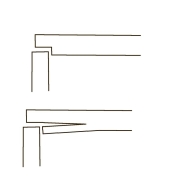

 7
7





- Tim's Homestead Journal - Purchase a copy of Building a Better World in Your Backyard - Purchase 6 Decks of Permaculture Cards -
- Purchase 12x Decks of Permaculture Cards - Purchase a copy of the SKIP Book - Purchase 12x copies of Building a Better World in your Backyard












 7
7




- Tim's Homestead Journal - Purchase a copy of Building a Better World in Your Backyard - Purchase 6 Decks of Permaculture Cards -
- Purchase 12x Decks of Permaculture Cards - Purchase a copy of the SKIP Book - Purchase 12x copies of Building a Better World in your Backyard

 15
15




For all your Montana Masonry Heater parts (also known as) Rocket Mass heater parts.
Visit me at
dragontechrmh.com Once you go brick you will never go back!
 12
12




 11
11




 7
7




Country oriented nerd with primary interests in alternate energy in particular solar. Dabble in gardening, trees, cob, soil building and a host of others.
 7
7




 9
9




![Filename: misshapenned-bolts.jpeg
Description: [Thumbnail for misshapenned-bolts.jpeg]](/t/270185/a/254121/misshapenned-bolts.jpeg)
John Daley Bendigo, Australia The Enemy of progress is the hope of a perfect plan
Benefits of rainfall collection https://permies.com/t/88043/benefits-rainfall-collection
GOOD DEBT/ BAD DEBT https://permies.com/t/179218/mortgages-good-debt-bad-debt
 3
3




John C Daley wrote:Interesting comments all around.
Things are different from when I started using nails!
Today I apply these rules;
- use galvanised nails only
you never have to throw them away if they get wet.
They grip better
They are easy to reuse
- Modern screws are great and dont work loose like some nails can.
But the real issue is these bolts I have collected below, they can take hours to get into place.
 4
4




Steve Zoma wrote:... auto framing nailers don't have nails that back out. With the whole construction industry using them, getting a nail gun that takes full round headed nails helps, but so too does the glue they put on these nails. When the nail is driven, the heat is activated and melts the glue, then when the nail cools, that glue bonds the nail to the wood so there is adhesive, and the friction of the compressed wood fibers.
... (No one asked, but as a side note, when taking things apart where modern auto-nailers were used, a reciprocating saw is your best friend. It is far easier to cut the boards apart then to try and pry out the nails)
 4
4




Douglas Alpenstock wrote:
Steve Zoma wrote:... auto framing nailers don't have nails that back out. With the whole construction industry using them, getting a nail gun that takes full round headed nails helps, but so too does the glue they put on these nails. When the nail is driven, the heat is activated and melts the glue, then when the nail cools, that glue bonds the nail to the wood so there is adhesive, and the friction of the compressed wood fibers.
... (No one asked, but as a side note, when taking things apart where modern auto-nailers were used, a reciprocating saw is your best friend. It is far easier to cut the boards apart then to try and pry out the nails)
Hm! I wonder if that's why wood pallets are so damn hard to pull apart.
 5
5




If there is one thing the Wizard of Oz has taught me, it is not to trust school teachers on bicycles.
 6
6




"Ah, but a man's reach should exceed his grasp,
Or what's a heaven for?"
Andrea del Sarto by Robert Browning
 8
8




thomas rubino wrote:Nails bend but rarely break, but they can unnail themselves over time.
Screws break but do not back out
Bottom line
Nails are stronger and resist shearing
Screws never come loose but can shear suddenly.
"The genius of American farm experts is very well demonstrated here: they can take a solution and divide it neatly into two problems." -Wendell Berry












 2
2




- Tim's Homestead Journal - Purchase a copy of Building a Better World in Your Backyard - Purchase 6 Decks of Permaculture Cards -
- Purchase 12x Decks of Permaculture Cards - Purchase a copy of the SKIP Book - Purchase 12x copies of Building a Better World in your Backyard
 4
4




 1
1




Invasive plants are Earth's way of insisting we notice her medicines. Stephen Herrod Buhner
Everyone learns what works by learning what doesn't work. Stephen Herrod Buhner












 3
3




- Tim's Homestead Journal - Purchase a copy of Building a Better World in Your Backyard - Purchase 6 Decks of Permaculture Cards -
- Purchase 12x Decks of Permaculture Cards - Purchase a copy of the SKIP Book - Purchase 12x copies of Building a Better World in your Backyard

|
My first bit of advice is that if you are going to be a mime, you shouldn't talk. Even the tiny ad is nodding:
The new gardening playing cards kickstarter is now live!
https://www.kickstarter.com/projects/paulwheaton/garden-cards
|






